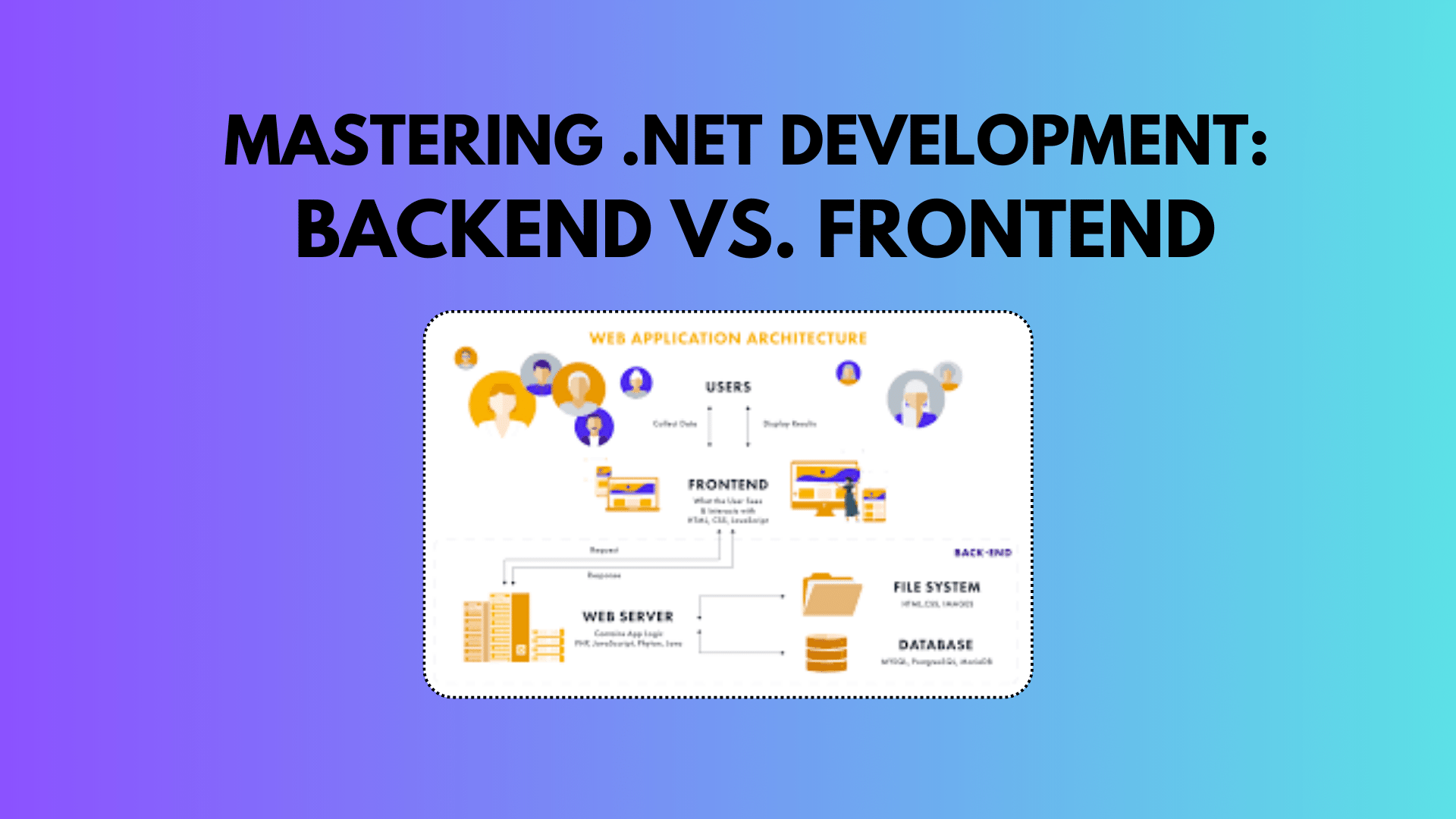
Mastering .NET Development: Backend vs. Frontend
In the ever-evolving world of web development, two terms stand out prominently – Frontend and Backend. These terms are the yin and yang of web development, and mastering both is crucial for creating functional and visually appealing websites. In this blog post, we’ll delve deep into the realm of Frontend and Backend development, exploring the key differences, languages, and technologies that power them. Whether you’re a budding developer or a seasoned pro, understanding these concepts is essential for your journey in .NET development.
Frontend vs. Backend:
Frontend and Backend are the building blocks of any web application. The Frontend is the user’s window to the digital world, encompassing everything that users see and interact with. It includes the graphical user interface (GUI), navigation menus, text, images, videos, and more. In contrast, the Backend operates behind the scenes, managing data, processing requests, and ensuring the website’s functionality. These two components must work seamlessly together to create a cohesive user experience.
You Might Like This :
- NET Array Transformation: From Data to String
- A Guide to Effective .NET 7 Program.cs Configuration
- Advanced Argument Parsing Techniques in .NET 6 Console Apps
Frontend Development:
- Languages of the Frontend:
- HTML: The Hypertext Markup Language defines the structure of web pages.
- CSS: Cascading Style Sheets add style and presentation to web content.
- JavaScript: This versatile scripting language enhances website interactivity. Frontend development focuses on responsiveness and performance, ensuring that websites look and function flawlessly across devices of all sizes.
- Front-End Frameworks and Libraries:
- AngularJS: An open-source framework for building single-page web applications.
- React.js: A flexible JavaScript library for creating user interfaces.
- Bootstrap: A popular framework for responsive web design.
- jQuery: A JavaScript library simplifying DOM manipulation.
- SASS: An extension language for enhancing CSS.
- Flutter: An open-source UI development SDK for mobile and web applications. Various frameworks and libraries empower frontend developers to create stunning and interactive web interfaces.
Back End Development:
- Languages of the Backend:
- PHP: A server-side scripting language designed for web development.
- C++: Widely used for competitive programming and backend development.
- Java: A scalable and popular programming language.
- Python: Known for efficiency and system integration.
- Node.js: An environment for executing JavaScript code on the server. Backend development handles data storage, processing, and ensures the functioning of the website without user interaction.
- Back-End Frameworks:
- Express: A Node.js framework for building web applications.
- Django: A Python framework known for security and scalability.
- Ruby on Rails: A server-side framework following the MVC pattern.
- Laravel: A robust web application framework for PHP.
- Spring: A Java-based framework supporting various frameworks like Hibernate and Struts. Back-end frameworks expedite the development of complex web applications.
Conclusion:
In the world of web development, mastering both Frontend and Backend is essential. Frontend developers craft user-friendly interfaces using HTML, CSS, and JavaScript, while Backend developers ensure data management and functionality. With a plethora of languages and frameworks at your disposal, .NET development offers endless possibilities. Whether you’re drawn to the visual appeal of the Frontend or the behind-the-scenes magic of the Backend, both are integral to creating successful web applications. So, embark on your .NET development journey, and explore the realms of Frontend and Backend to become a well-rounded developer.


[…] Mastering .NET Development: Backend vs. Frontend […]
[…] Mastering .NET Development: Backend vs. Frontend […]
[…] Mastering .NET Development: Backend vs. Frontend […]